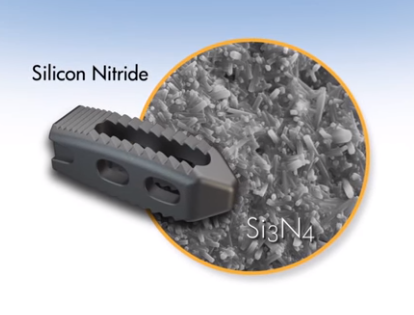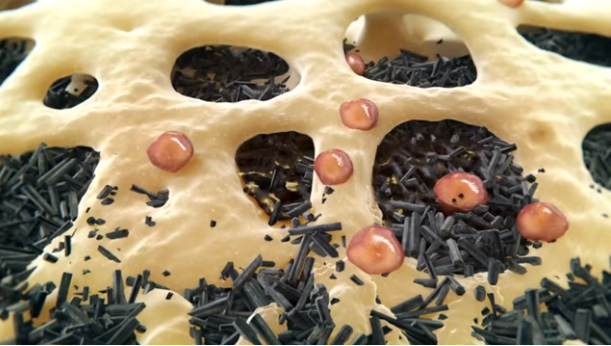 Along with all the innovations and novelty being introduced to the world via 3D printing, so is an unexpected education in materials. While learning about ABS, PLA, and also resins was eye-opening as everyone asked “what do you feed those machines, anyway?” we’re now seeing a vast supply of new options become available, mainly due to demand. With the technology in the public eye and so many designers and manufacturers delving into its uses and benefits, materials one might never have considered being used in combination with 3D printing are indeed showing themselves to be suitable for myriad applications in medical, manufacturing, construction, art, fashion, and far more.
Along with all the innovations and novelty being introduced to the world via 3D printing, so is an unexpected education in materials. While learning about ABS, PLA, and also resins was eye-opening as everyone asked “what do you feed those machines, anyway?” we’re now seeing a vast supply of new options become available, mainly due to demand. With the technology in the public eye and so many designers and manufacturers delving into its uses and benefits, materials one might never have considered being used in combination with 3D printing are indeed showing themselves to be suitable for myriad applications in medical, manufacturing, construction, art, fashion, and far more.
Ceramics is one material that’s been cropping up more and more as a material—and not just for the artisan crowd, where we’ve followed some interesting new 3D printing ideas for sure. While nothing ‘concrete’ has really shown itself so far, it seems that now we’re hearing the term attached to another material entirely, as Amedica Corporation announces the manufacturing of complex, 3D structures using silicon nitride ceramics. This should prove to add further transformation to the innovations in medical implants.
Testing has so far shown these 3D printed works to be viable, with scanning electron microscopy confirming its ‘integrity and validity.’ This material is already in use for technology in spinal and orthopedic reconstructive surgery. It offers excellent osteoconductive properties, high wear resistance, as well as greatly improved compatibility with all imaging modalities.
 For uses in 3D printing, Amedica is seeing that this material is able to offer the same density, as well as microstructures found when using traditionally made silicon nitride fusion devices. We’ve seen the rise of 3D printing for use in many medical applications, and it would seem that this material is going to prove itself as a valuable resource.
For uses in 3D printing, Amedica is seeing that this material is able to offer the same density, as well as microstructures found when using traditionally made silicon nitride fusion devices. We’ve seen the rise of 3D printing for use in many medical applications, and it would seem that this material is going to prove itself as a valuable resource.
“This innovation speaks to the unique art and science related to our manufacturing strength,” said Dr. Sonny Bal, Chairman and Chief Executive Officer. “3D printing of a complex ceramic material opens future doors, especially in terms of cost advantages, and addressing a variety of OEM partner needs. Custom additive manufacturing is a modern advancement, and we are proud to lead the way in 3D printing of our silicon nitride formulation, with its advantages in bone fusion, antibacterial behavior, and superior strength.”
Use of the material is combined with robocasting, a freeform technique that allows dense ceramics and composites to be used as ‘highly colloidal slurries’ are layered in a binderless process, sintering work in less than 24 hours. The goal in using these materials and processes is ultimately hoped to be for use in medical implants, as Amedica will be able to move forward in commercializing them by 3D printing them with silicon nitride. Due to the porosity levels which can be manipulated, it’s thought that a number of very specific clinical needs can met.
Silicon nitride should prove to be useful for implants that are shaped to be anatomically relevant as well as allowing for researchers to make 3D printed or bioprinted scaffolding that be used in both cellular differentiation and neovascularization.
 As a company already specializing in making medical products—with an emphasis on silicon nitride ceramic—Amedica also markets spinal fusion products and is heavily involved in fabricating implant components that are resistant to corrosion, especially for hip and knee arthroplasties and dental applications.
As a company already specializing in making medical products—with an emphasis on silicon nitride ceramic—Amedica also markets spinal fusion products and is heavily involved in fabricating implant components that are resistant to corrosion, especially for hip and knee arthroplasties and dental applications.
All of this is made very possible due to their partnership with Kyocera, another company that we’ve followed most recently in connection to their partnership with 3D Systems. Amedica currently makes its products in an ISO 13485 certified manufacturing facility through Kyocera. Their products, currently marketed in the US, Europe, and South America, are done so through Amedica’s distributor network, along with growing OEM and private label partnerships. Their products for the spine are all cleared by the FDA and CE marked. Have you heard of this material before? Let’s discuss in the 3D Printing & Robocasting forum over at 3DPB.com.
Subscribe to Our Email Newsletter
Stay up-to-date on all the latest news from the 3D printing industry and receive information and offers from third party vendors.
You May Also Like
3D Printed Heat Spreader Could Improve Efficiency of Electronics
The low-hanging fruit for decarbonization has long been improving the efficiency of existing systems, hence the justification for LED lights and ENERGY STAR certified appliances. While such minor moves are...
3D Printing News Unpeeled: Marine Gearboxes, 3D Printed Motors and $1.7 Million in Seed Funding
UK based Equipmake just released their Ampere-220 e-axle system. The system, which is meant for high performance electric cars, was similar to one released on the Ariel HIPERCAR. It has...
CEAD Unveils 36-Meter-Long 3D Printer for Abu Dhabi’s Al Seer Marine
CEAD, a Dutch original equipment manufacturer dedicated to large-format 3D printers, has unveiled what it claims to be the world’s largest robotic arm-based 3D printer. At 36 meters long and...
3D Printed Biocomposites Could Help Reduce Marine Plastic Pollution
Concerns about the impact of plastic litter and microplastics in the oceans are at the forefront of environmental study. For decades, the marine environment has suffered from the degradation of...




































